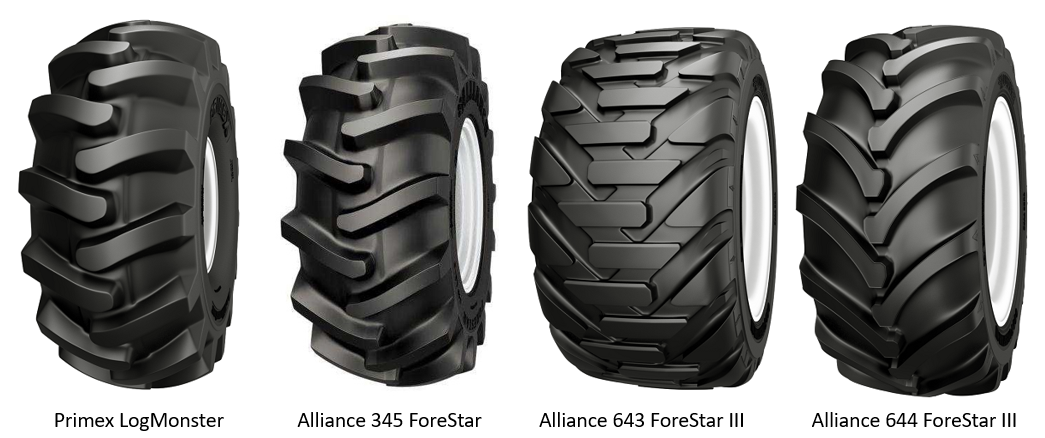Should I Choose Tubeless Forestry Tires?
Foresters have a lot to think about—from high-powered equipment to challenging terrain to gigantic trees—so it’s easy to understand why tires often get overlooked. However, tires have been on the top of foresters’ minds recently, as more and more of them are moving away from tube-type tires in favor of tubeless. Both tube and tubeless tires operate at the same inflation pressures and share load capacities, but the repairability and lower total cost of ownership (TCO) of tubeless tires have many proactive forestry operations thinking about their tires and how to maximize their investment in them.
Tube-Type Tires vs. Tubeless Tires
Tube tires have long been the standard in forestry—one of the primary reasons so many tube tires remain in the field is simply that it’s what operators are used to. But now perceptions are changing thanks to more OEMs offering new equipment with tubeless tires, along with tire dealers informing their customers of the benefits of switching their logging equipment to tubeless.
Upfront Costs
The least expensive tire at the dealer isn’t necessarily the most cost-effective tire in the long run. There’s no denying that tubeless tires have a higher upfront cost than their tubed counterparts, but eliminating the expense of replacement tubes, the ease of repairing a tubeless tire, and the reduction in downtime they provide allows them to provide a lower total cost of ownership.
Troublesome Tubes
Tube-type tires have been the go-to choice of foresters for years, but they aren’t without their issues. A common problem with tubes in forestry applications occurs in high-torque situations, where a tube can turn inside the tire and yank out the valve stem, which causes a flat. This issue is only exasperated by foresters trying to use tubes with four-inch offsets in rims with eight-inch offsets—a surefire way to rip the valve stem from the tube. These are obviously not issues with tubeless tires, as there are no tubes to jerk the valve stems.
In addition to ripping off valve stems, tubes also suffer punctures when working in tough applications like forestry. Generally, when a forestry tire is damaged, it isn’t repairable, which presents another issue: locating a tube. Many dealers don’t stock the costly, heavy-duty tubes made from natural rubber that are required by rugged forestry applications. To overcome this challenge, a lesser-quality tube is used—this gets the machine up and running, but invites future tube failure. Even if a dealer has a tube in stock, or one is easily located, they’re expensive (tubeless tires can save loggers a few hundred dollars per wheel)—not to mention they’re heavy and hard to handle.
Even tubeless tires aren’t impervious to punctures when working in demanding applications such as forestry, but they do offer a much simpler and lasting solution when damaged. They’re easily fixed in the field—minimizing downtime—with a tire plug or pull-through patch. These fixes are lasting too, if done properly they will perform for the life of the tire.
Alliance and Primex Offerings
From classic tires like our Primex LogMonster to our Alliance 345 ForeStar, our lineup of forestry tires is more than keeping pace with the demand for tubeless tires, it’s forging ahead. Our Alliance 643 ForeStar III and Alliance 644 ForeStar III are among the first tubeless tires for cut-to-length machinery. This is a boon for busy CTL operations, as they fit on the same rims as tube-type tires and are easier to ballast.

Learn More About Our Alliance Forestar III 643 & 644 Tires
Contact your local Alliance or Primex brand dealer or rep today to learn more about all of our great application-specific forestry tires and how they can benefit your operation.
Comments
Post a Comment